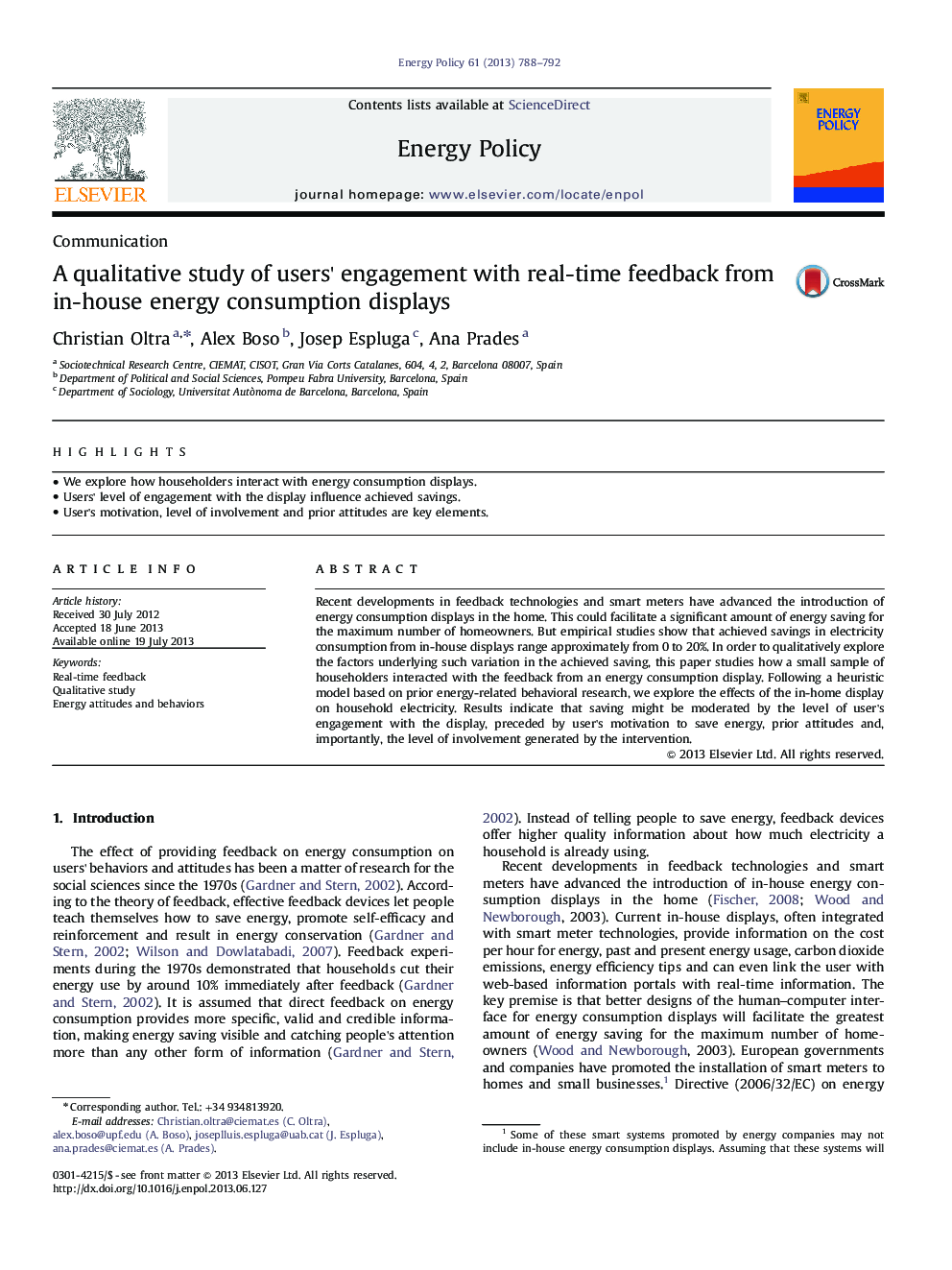| Article ID | Journal | Published Year | Pages | File Type |
|---|---|---|---|---|
| 7404915 | Energy Policy | 2013 | 5 Pages |
Abstract
Recent developments in feedback technologies and smart meters have advanced the introduction of energy consumption displays in the home. This could facilitate a significant amount of energy saving for the maximum number of homeowners. But empirical studies show that achieved savings in electricity consumption from in-house displays range approximately from 0 to 20%. In order to qualitatively explore the factors underlying such variation in the achieved saving, this paper studies how a small sample of householders interacted with the feedback from an energy consumption display. Following a heuristic model based on prior energy-related behavioral research, we explore the effects of the in-home display on household electricity. Results indicate that saving might be moderated by the level of user's engagement with the display, preceded by user's motivation to save energy, prior attitudes and, importantly, the level of involvement generated by the intervention.
Keywords
Related Topics
Physical Sciences and Engineering
Energy
Energy Engineering and Power Technology
Authors
Christian Oltra, Alex Boso, Josep Espluga, Ana Prades,
